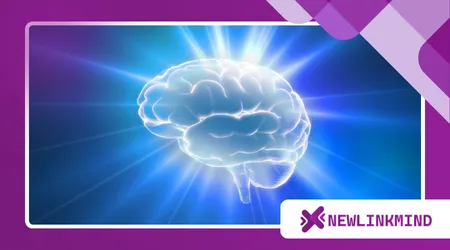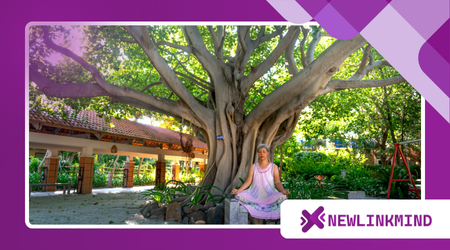What Happens to the Brain When Seniors Meditate

Happens to the Brain When Seniors Meditate. Meditation actively shapes the brain through the principle of neuroplasticity.
Anúncios
This remarkable ability allows the brain to reorganize itself by forming new neural connections throughout life.
For seniors, this means their brains remain adaptable and capable of growth, pushing back against the notion of inevitable decline.
Regular practice encourages structural and functional changes in key brain areas.
It acts like mental cross-training, strengthening circuits responsible for focus and emotional control.
Anúncios
This consistent, deliberate training challenges the brain in a constructive way.
Instead of succumbing to atrophy, brain regions involved in attention and self-awareness increase their activity and structural complexity.
Think of it like a well-used garden where diligent tending yields vibrant new growth, not decay.
Anúncios
Why Does Meditation Increase Gray Matter Volume? Happens to the Brain When Seniors Meditate
One compelling finding is the association between long-term meditation and increased gray matter volume.
Gray matter, composed mainly of neuronal cell bodies, plays a crucial role in sensory perception, muscle control, memory, and emotional regulation.
Studies show that seasoned meditators, even among older adults, often possess thicker cortical regions compared to their non-meditating peers.
This is particularly noticeable in the prefrontal cortex, which governs executive functions like decision-making and working memory.
The consistent mental effort involved in focusing attention during meditation likely drives this structural preservation or increase.
Read more: Starting Meditation in Retirement: A Journey of Inner Peace
This physical change suggests a tangible countermeasure to the age-related thinning of the cortex. It provides a biological basis for the reported cognitive benefits.
A thicker cortex essentially means a more robust processing center, maintaining sharpness and efficiency. It’s a compelling reason to integrate this practice into a daily routine.

What Happens to the Amygdala and Stress Response During Practice?
The brain’s emotional center, the amygdala, undergoes significant modulation with regular meditation.
This area is responsible for processing fear and stress, often becoming hyperactive under duress.
Seniors often face increased stress factors, and an overactive amygdala can contribute to anxiety and emotional volatility.
See how interesting: How to Create a Peaceful Meditation Space for Seniors
Meditation helps to dial down this overreaction. It fosters a state of greater emotional regulation, allowing for a calmer, more measured response to difficult situations.
For example, when an older person faces a frustrating situation, like forgetting where they left their keys, a non-meditator might spiral into immediate anxiety.
The meditator, however, having strengthened the connection between the prefrontal cortex and the amygdala, can observe the frustration without being engulfed by it.
This reduced reactivity is crucial for overall mental well-being and a less stressed existence.
How Does Meditation Preserve Cognitive Functions and Attention?
The practice significantly enhances attention and memory, two cognitive domains often affected by aging.
Meditation is fundamentally an exercise in attention control.
The constant process of noticing when the mind wanders and gently bringing focus back strengthens the neural networks responsible for sustained attention.
++ Mindful Emailing: How Meditation Can Change the Way You Communicate
A systematic review and meta-analysis of randomized controlled trials suggests a benefit, finding that meditation is an effective adjunct therapy for improving global cognitive performance in older adults with subjective cognitive decline (SCD), mild cognitive impairment (MCI), and Alzheimer’s disease (AD). (Source: Frontiers in Public Health, 2025).
This powerful statistic underlines the functional benefits.
The improvement in focused attention translates into better daily functioning, making complex tasks easier and reducing the frequency of careless errors.
Consider the dynamic interplay between different brain states. Researchers utilize dynamic functional network connectivity (dFNC) to see how brain regions communicate.
An 18-month meditation training trial in older adults showed meditators spent less time in “weakly connected” brain states, which are associated with cognitive risk factors, and more time in “strongly connected” states, which act as a protective factor.
This shift in brain dynamics provides a clear example of meditation creating a more efficient and resilient neural landscape.
| Brain State Changes in Older Meditators (Conceptual) | Non-Meditators (Aging Baseline) | Experienced Meditators (Post-Intervention) |
| Time in “Weakly Connected” States (Risk) | High | Decreased |
| Time in “Strongly Connected” States (Protective) | Low | Increased |
| Emotional Reactivity (Amygdala Activity) | High | Reduced |
| Cortical Thickness (Prefrontal Cortex) | Thinning Trend | Preservation/Increase |

Can Meditation Slow Down the Brain’s Clock? Happens to the Brain When Seniors Meditate
Emerging evidence suggests that meditation could effectively reduce an individual’s ‘brain age.’ One analogy to understand this is thinking about a piece of machinery.
An older machine (brain) that is regularly maintained and oiled (meditation) functions much more smoothly and efficiently than one left to rust.
The regular activation and balanced activity promoted by meditation appear to maintain the brain’s biological metrics at a level younger than the chronological age.
This slowing of the clock offers a hopeful vision for aging. Ultimately, Happens to the Brain When Seniors Meditate is the creation of measurable resilience.
The mental clarity gained can truly revolutionize later life. Instead of being preoccupied with cognitive decline, one gains a renewed sense of presence and capability.
Why wouldn’t anyone embrace such a simple yet profoundly transformative practice?
Happens to the Brain When Seniors Meditate is about building a better, stronger future self, one breath at a time. The benefits are structural, functional, and deeply emotional.
Happens to the Brain When Seniors Meditate moves beyond mere relaxation; it is a neurological workout.
It fundamentally rewires the brain’s architecture for greater resilience and peace. Embracing this practice today means investing in sharper memory, better focus, and a calmer emotional life for years to come.
Happens to the Brain When Seniors Meditate is the conscious choice for a vibrant mind. Happens to the Brain When Seniors Meditate is the key to mental longevity. The evidence is clear.
Frequently Asked Questions
How long do seniors need to meditate to see brain changes?
Observable functional changes, such as improved attention and reduced stress reactivity, can begin in as little as four to eight weeks of consistent daily practice (even 10–20 minutes).
Structural changes, like increased gray matter, are typically noted in studies involving long-term practitioners (months to years).
What type of meditation is best for cognitive health?
Mindfulness meditation (focusing on breath or body sensations) and Kirtan Kriya (a specific type of yogic chant meditation) are the most frequently studied and have shown strong evidence for improving memory, attention, and executive function in older adults. However, consistency in any form is key.
Is meditation a substitute for traditional dementia treatments?
No. Meditation is considered a powerful, non-pharmacological adjunct therapy, meaning it complements traditional medical treatments.
It enhances cognitive reserve and overall well-being, but it does not replace prescribed medical interventions for conditions like Alzheimer’s disease or dementia.
++ Decoding meditation mechanisms underlying brain preservation
